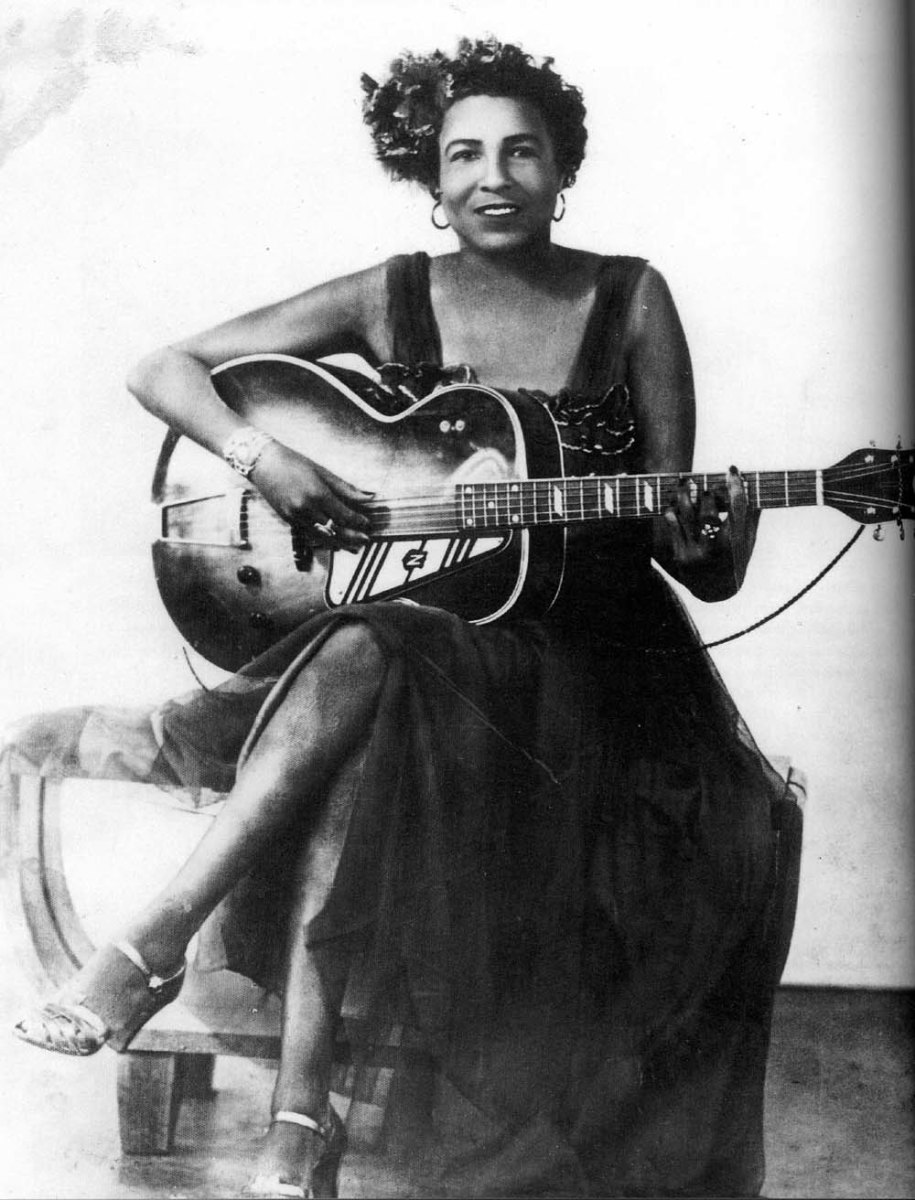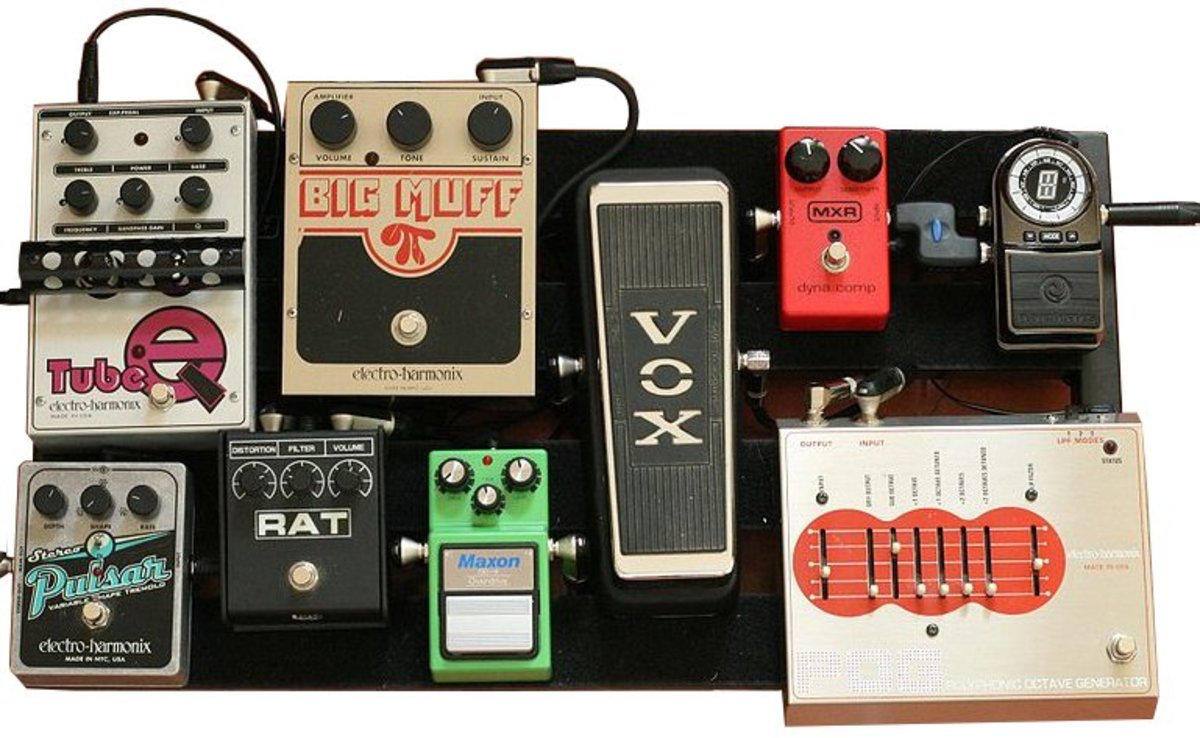Learn How to Play Native American Flute
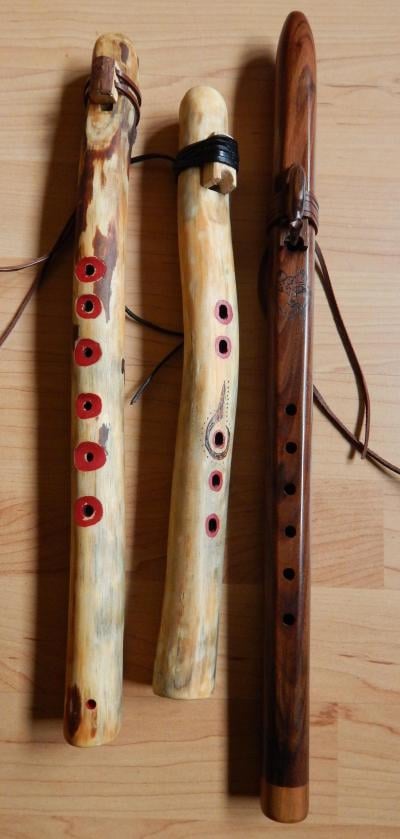
The Beauty of Native American Flute
With the growing importance of the New Age movemement and the social changes in the 60s and 70s, as a side effect came the popularization of the Native American flute. A woodwind instrument, Native Americal flute is an end-blown flute. This means that you blown the air into one end of the flute, instead of blowing it across the hole like in the transverse flutes. The construction of the Native American flute makes it one of the simplest instruments to play.
Literally everyone can play this instrument as long as he or she can breath and cover the finger holes.
Everyone Can Play Native American Flute
My journey with the Native American flute started with watching the TV series: "Northern Exposure". Quite often, the sounds of the NAF provided a background music for the events of the series, and in one of the episodes, one of the characters was filming a flute craftsman building a NAF.
For a guy in Poland, a small country in Europe, placed so far away from North American, learning to play the NAF was quite original. But I managed to do so with the help of videos and books and on-line resources. This hub is a collection of the resources and steps that I used in order to learn how to play the Native American flute.
Yes, you read correct - you can learn to play the Native American flute simple from books and on-line resources, such as YouTube. These provide you with knowledge, lessons and tips. The rest is up to you - if you're patient and you practice on regular basis, then you don't need anything else.
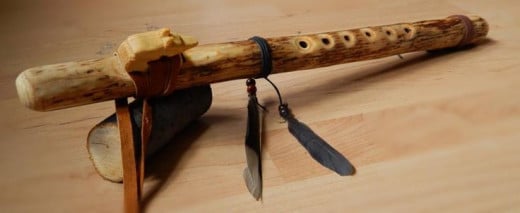
Where Can I Buy Flutes?
If you don't have a flute already, you may wonder where to get one. Well, there are many options to choose from, since there are so many flute makers nowadays. You can look on eBay, or Etsy or Amazon. Or you can build a flute by yourself - it's what I do quite often. Below I post some ideas where some flutes can be bought.
- Etsy - Your place to buy and sell all things handmade, vintage, and supplies
Here you can buy some good flutes, just type "Native American flute" into the search engine, and you will see a lot of results. - Home of Blue Bear Flutes
Authentic Native American Flutes, handmade by a family of Native American Artists. The Best prices on the Best Native American Flutes with online lessons and instructions! We specialize in traditional flutes and if you are looking for something speci - HIGH SPIRITS FLUTES | HAND-CRAFTED IN THE STYLE OF TRADITIONAL NATIVE AMERICAN FLUTES
Selling hand-made wooden flutes by Odell Borg, crafted in the style of traditional Native American flutes. Flute cases, leather flute bags, flute stands, flute music CDs. How to play the flute DVDs. Native American flute history.
Or, you can get some basic flute on Amazon

After Getting a Flute
When you have a flute, it's time to start playing it.
Instructions
- The first thing to do is to blow the air into the flute. Place the blowing hole gently on your lower lip, and cover it with your upper lip, creating an embouchure. The point is to cover the hole with your lips, but not to put the flute inside your mouth at the same time to protect it against moisture.
- Then, blow the air gently into the whole while covering all the finger holes with your fingers. Notice the sound of the flute. This is the lowest sound the flute can make, and it is called the flute's "Key".
- Then begin to blow the air stronger and stronger, until you can hear the sound of the flute jump higher - in professional terms, the flute jumped into the higher octave.
Enjoy the Sounds of Native Flute
The point of this exercise is to help you learn your flute. Each flute is unique, and the amount of air needed for a clear sound is different for each instrument. Whenever you get a new flute, you have to experiment with it first.
When you're done with this simple exercise, you can learn to play the scale.
Basic Pentatonic Scale
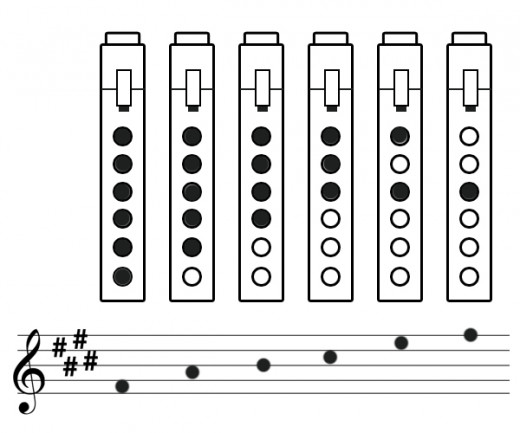
Playing the Scale
Most Native American Flutes have either five or six holes. And often, when the flute has six holes, the fourth hole (counting from the end of the flute) is covered. Some people prefer to play with a five hole flute, so they cover this one hole for good. Basically, this fourth hole is not that important for the pentatonic scale - the main scale for the native flutes.
Take a look at the image above - it's a basic fingering chart for the basic pentatonic scale. Now begin to remove the fingers from the finger holes as presented by the image above. Once all the holes are uncovered, move in reverse order and begin to cover the holes in the opposite order.
When you're done, you have played a scale with your flute. This is quite simple, isn't it? Now, playing the actual music is more tricky, but there are ways to learn.
The First Book to Buy

Learning from Nakai
The Internet is full of many articles and resources on playing the NAF, but none of these provded to be useful to me while I was still a beginner. I needed something that could help me learn to play the notes. And to memorize them, and to learn the scales. I needed something with step-by-step exercises.
That's when I stumbled upon "The Art of Native American Flute" by C.R. Nakai. This book turned out to be perfect for a beginner like me. The author of this book, Carlos R. Nakai is a well-known flute player who recorded a number of popular albums. He's also one of those people who helped spread the popularity of the Native American flutes.
The main advantage of this book is the fact that Nakai takes the reader into a step-by-step journey. First, he provides us with a fingering charts for flute scales. Right after that, a simple exercise is provided with notes on the staff, but no more fingering charts below the notes. The point of this exercise is to help the player memorize the notes.
That's what I did. At first, I was just looking at the note, then looking back back on the fingering chart, trying to find the note and corresponding finger positions, then go back to the staff and play the note. Then - repeat. I've practiced that for 15 minutes. The next day I did the same, and it took me 3 days, no more than an hour of practice, to actually memorize the notes and finger positions.
Then, the book provides the reader with information on basic musical notation like length of the notes, pauses or "decorations". And then, the book provides us with over a dozen sheet notes for musical pieces of Nakai himself. This is a great opportunity to actually learn and play different melodies.
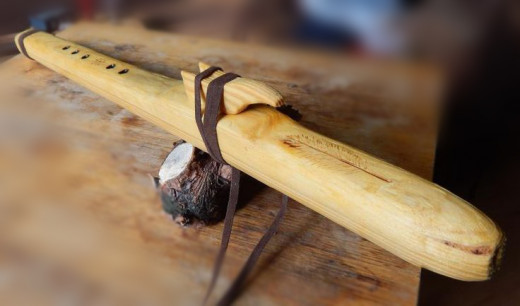
Learn to Read Music
The book of Carlos R. Nakai provides you with some great tips, advices and exercises, but understanding how to read music is not that simple from mere book. This is where YouTube comes to rescue. The TEDed has shared a very useful video by Tim Hansen that helped me understand notes and learn to read music. With the help of the following video, the book of Nakai had no more secrets left for me.
Practicing Further
At this point, you should already play the flute. That means if you had purchased Nakai's book and watched the video. I know that you probably didn't because it's a Hub and you read it from top to bottom and you're going to order the book later, but let's not deal with this whole time and space continuum stuff right now.
Playing the Native American flute is not just about reading notes. It's also about breath, art and specific decorations - the "special effects" of this type of flute.
Odell Borg has provided the YouTube users with a collection of instructional videos that will further help you learn to play the Native American flute. See the first of the series of videos below.
Where To Look for Songs
As you progress with learning how to play the flute, but before you begin to write your own music, you may want to play the music of others. There are many sources available, some free and some paid, that provide you with sheet notes for different music. Below I post some resources.
Free Music Notes for Native American Flute
- Native American Flute - Song Book
More songs for Native American Flute. - Flutetree - the nature of the Native American Flute
Exploration of Native American flutes from past to present.
Books and Songbooks on Amazon
The Beauty of the Flute
Native American Flute is a wonderful and deeply spiritual instrument that is very easy to learn. Mastering the flute requires time, of course. But with the resources provided above you should have no problems learning to play the flute very beautifully.
© 2014 Nathaniel



